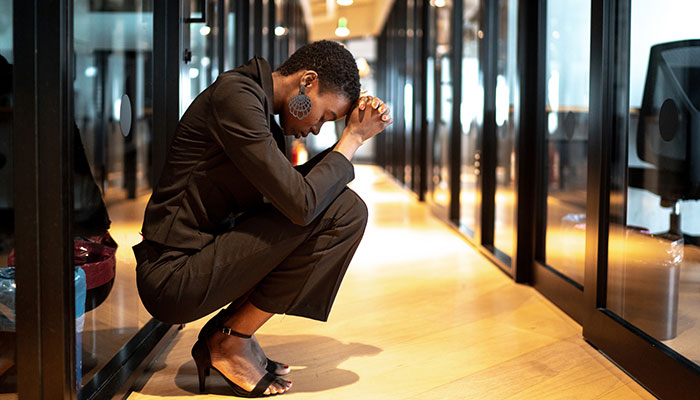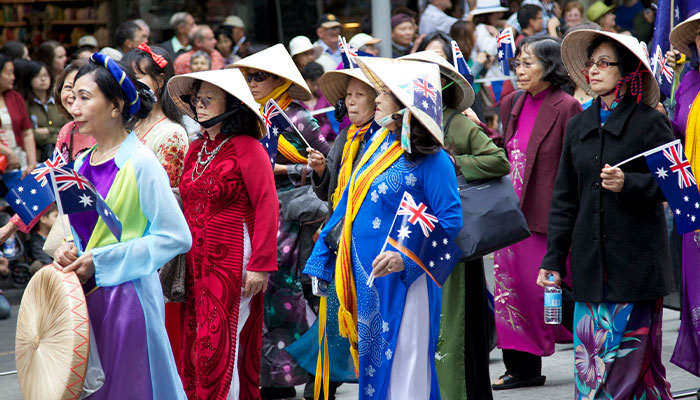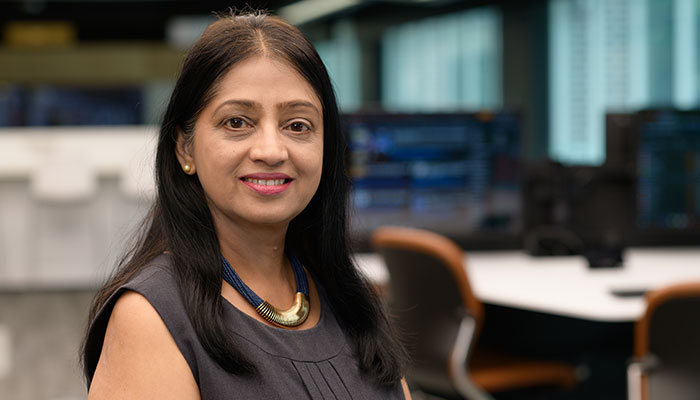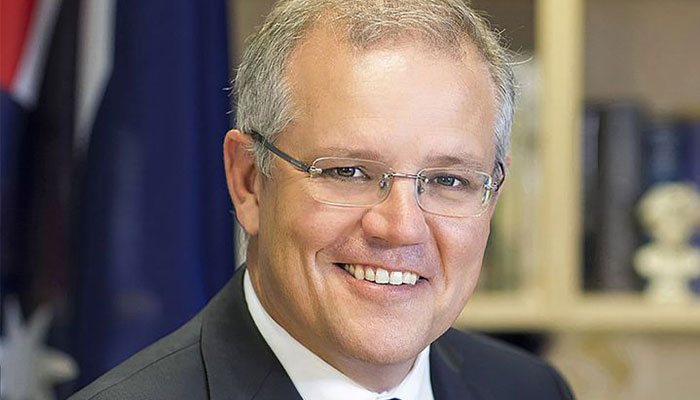Researchers from Macquarie Business School’s Centre for Workforce Futures say the lack of cultural diversity in the workplace and in many of our key institutions has been exacerbated by the pandemic, with women and individuals from different cultural backgrounds most affected.

Payroll purge: Women have been hit hard by the pandemic; in Victoria, they lost work at more than four times the rate of men.
“Diversity and the wellness of diverse groups such as the elderly, the LGBTQI+ community, people with disabilities, women and people of colour have been put on the back burner during COVID-19 and they have been impacted the most,” says Dr Meena Chavan, a Senior Lecturer and member of the Centre for Workforce Futures at Macquarie Business School.
Australian Bureau of Statistics payroll data shows that in Victoria -- which has been hit hard during the pandemic -- women lost work at more than four times the rate of men.
The Centre for Workforce Futures has highlighted the extraordinary economic impact that COVID-19 is having on women who are experiencing serious financial hardship and are more likely to fall into poverty as a result of the loss of paid employment.
Women have been among the worst affected and have experienced disproportionate unemployment during COVID-19.
“Women have been among the worst affected and have experienced disproportionate unemployment during COVID-19,” Chavan says.
This phenomenon is not unique to Australia with some US economists calling this the first ‘female recession’, adding that the jobs, income and career development women are losing due to the pandemic could restrain economic growth for the entire next generation of America’s working women.
Questions over multiculturalism remain
Australia has accepted diversity broadly through its multicultural policy, its federal and state laws against discrimination, its national anti-racism campaign Racism. It Stops with Me, and its annual Harmony Day celebrations.

Land of many: Home to more than 300 ethnic groups, Australia celebrates its multiculturalism, but the question remains whether the benefits of diversity are being accrued in our organisations, says Dr Chavan.
“Over the past 40 years much has been written in Australia about the benefits of cultural diversity for business with claims that it fosters innovation, creativity, ingenuity, problem solving, as well as an enrichment of society as a whole through the exchange of cultural traditions,” Chavan says.
About 30 per cent of Australians were born overseas, which is a higher percentage than in the United States (14 per cent), Canada (22 per cent) and New Zealand (27 per cent).
Further, in Australia almost half of the population has at least one parent born overseas, there are more than 100 different religions, 300 ethnic groups, and about 3 per cent of Australians identify as Aboriginal, Torres Strait Islander or both.
“Yet questions remain: Are we accruing the benefits of cultural diversity in Australian organisations? How can organisations make ‘diversity’ good for business?,” Chavan says.
In the most successful cases, diversity and inclusion policies have formed part of a core business strategy. More organisations need to follow suit because despite such developments, many organisations have failed to take advantage of the nation’s cultural and linguistic diversity, according to an OECD survey conducted by the Australian Human Resource Institute and analysed by Professor Lucy Taksa and Dr Nour Dados from the Macquarie Business School.
Organisations fail to deliver
But while some of Australia’s biggest organisations have embraced diversity and inclusion policies and strategies to promote diversity, Chavan and Taksa maintain many are still failing to deliver.

Talk v action: Dr Meena Chavan (pictured) says many diversity training sessions just tick a box to meet government policy requirements.
“Organisations send their staff off to diversity training and spend thousands of dollars when we all know it does not work as the figures tell a different and real story on diversity management,” Taksa says.
“Celebrating diversity day and having campaigns on racism are good, but it is important to engage in activities which don’t just celebrate minorities on special days but acknowledge their contribution and potential every day," Chavan says.
Chavan and Taksa both stress that outcomes, impacts and metrics are vital. Promoting those benefits and impacts will encourage more acceptance of diversity, so organisations need to investigate if their actions have made their organisational culture more diverse.
It is important to engage in activities which don’t just celebrate minorities on special days but acknowledge their contribution and potential every day.
“Many of these training sessions just tick a box to meet government policy requirements. On the flipside, there are organisations that do not do any diversity training but spread diversity practice through strategies and directives that demonstrate the impact of diversity through their metrics. Their recruitment, promotion and staff development figures show that – as do their leadership and boards. Action is more important than talk,” Chavan says
Chavan and Taksa point out that despite more than 40 years of anti-discrimination laws, diversity policies, strategies and measures, the leadership of Australian companies remains the domain of white men.
Taksa, who is also Co-Director of the Centre for Workforce Futures, says numerous studies have indicated that the percentage of people from non-English speaking backgrounds in our parliaments and other governing institutions are paltry.
- Divide and conquer: why doing Maths adds up to life success
- VIDEO New hope as dementia therapy reverses memory loss
“In 2018, they accounted for less than 20 of the 226 parliamentarians in the Federal Parliament, with very few of them from Asian, Middle Eastern, African and Eastern European backgrounds,” Taksa says.
The implications are evident in the Australian Human Rights Commission 2017-18 Complaint statistics, which show that one in 10 Australians (1.5 million of the nation’s adult population) believe that some races are inferior or superior to others, while 18 per cent of Australians have experienced discrimination because of skin colour, ethnic origin or religion.
Taksa says diversity policies and staff diversity training have not helped to eliminate inequity or bias in organisations.
“Diversity reports and statistics clearly show that inequality, exclusion and marginalisation remain for Indigenous, culturally and linguistically diverse, older, disabled, LGBTQI+ and women in Australia,” Taksa says
Time for a new normal
Importantly, Indigenous prison statistics get worse every year. Aboriginal people are overrepresented in the Australian criminal justice system. They represent only 3 per cent of the total population, yet more than 29 per cent of Australia's prison population is Aboriginal.

Small steps: While some of Australia’s biggest organisations have embraced strategies to promote diversity, Professor Lucy Taksa (pictured) maintains many are still failing to deliver.
Following the ‘Black Lives Matter’ campaign, Chavan says more work needs to be done. “The time is ripe to address these statistics and the systemic issues they reflect to create a new normal.”
Chavan points out that a more prominent role for representative grassroots in organisations is necessary to give voice to the marginalised in organisations.
“Participation from such representative associations and their members would help to introduce creative ideas and solutions based on lived experiences of exclusion and marginalisation.
“Greater voice from the front lines would improve decision-making processes and initiatives to reduce the tangible and intangible costs associated with discrimination, racism and vilification and to facilitate inclusive outcomes for a new normal in our workplaces.”
Dr Meena Chavan is a Senior Lecturer, Program Director Master of International Business from the Department of Management and a member of the Centre for Workforce Futures at Macquarie Business School
Professor Lucy Taksa is Co-Director of the Centre for Workforce Futures at Macquarie Business School.



